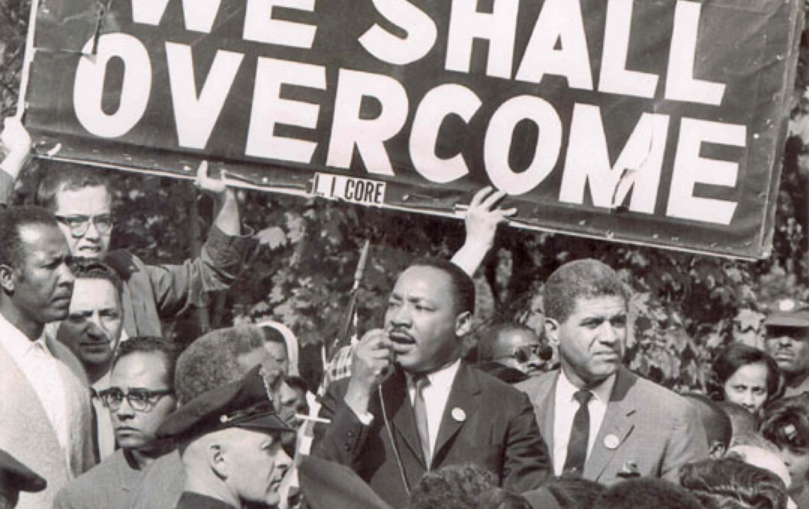Table of Contents
PRESIDENTS AND SLAVES
Despite the Declaration of Independence’s claim that all men are created equal, many of our founding fathers were slave owners, a conflict of practice and belief that has reverberated throughout American history.
 |
By Jonah Winter, My Name is James Madison Hemings (Schwartz & Wade, 2016) is the first-person account of Jefferson’s conflicted legacy and his relationship with his slave family by Sally Hemings, as narrated by the young James Madison Hemings. For ages 5-9. |
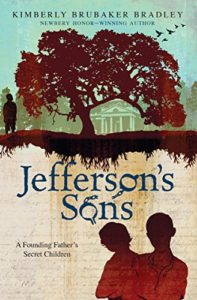 |
By Kimberly Brubaker Bradley, Jefferson’s Sons (Puffin, 2013) tells the stories of three of Jefferson’s children by Sally Hemings, Beverly, Madison, and Peter. Jefferson is shown as a difficult and contradictory figure – the kindly man who nonetheless permits whippings and slave sales. Would a great person sell someone else’s son? Can a person be great and still participate in evil? A good discussion book for ages 9-12. |
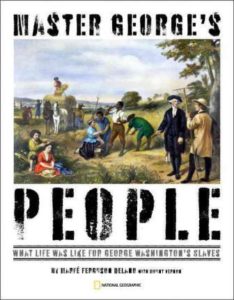 |
Marfe Ferguson Delano’s Master George’s People (National Geographic, 2013) is the story of George Washington’s slaves, including capsule biographies, period prints. and photographs of the Mount Vernon historical site. For ages 10 and up.
|
 |
By Erica Armstrong Dunbar, Never Caught (Aladdin, 2019) is the story of Ona Judge, born into slavery at Mount Vernon, who escaped from Washington’s presidential mansion in Philadelphia in 1796 and boarded a ship for New Hampshire. Despite Washington’s determined efforts to recapture her, she was never caught. Young Reader’s Edition of a more detailed adult book. For ages 9-14. |
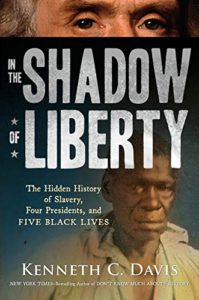 |
By Kenneth C. Davis, In the Shadow of Liberty (Square Fish, 2019), subtitled “The Hidden History of Slavery, Four Presidents, and Five Black Lives,” is the story of five enslaved people who were owned by our founding fathers, among them George Washington’s valet, Billy Lee; Isaac Granger, raised at Monticello; and Paul Jennings, who accompanied James and Dolley Madison to the White House. Well-researched nonfiction for ages 10-14. |
FUGITIVES, RUNAWAYS, AND THE UNDERGROUND RAILROAD
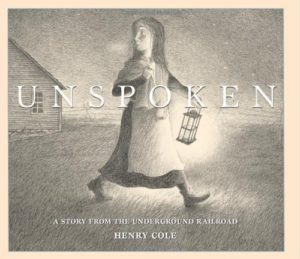 |
In Unspoken, a lovely wordless picture book by Henry Cole (Scholastic, 2012), a little farm girl finds a runaway slave hiding in the barn. For ages 3-8. |
 |
Jeanette Winters’s Follow the Drinking Gourd (Dragonfly, 1992) is the story of Peg Leg Joe, who helps slaves escape North to freedom by teaching them a song about the Big Dipper. For ages 4-8.
|
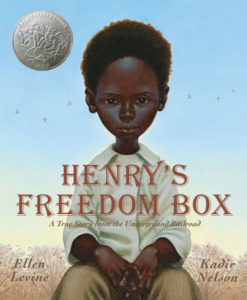 |
Ellen Levine’s Henry’s Freedom Box (Scholastic, 2007) is based on the true story of Henry Brown who – after his wife and children are sold – has himself nailed into a wooden crate and shipped to the free city of Philadelphia. A beautifully illustrated picture book for ages 4-8.
|
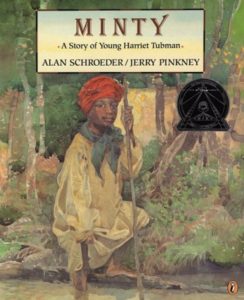 |
Alan Schroeder’s Minty (Puffin, 2000) is a picture-book story of young Harriet Tubman, the clever and courageous woman who helped hundreds of slaves escape north to freedom via the Underground Railroad. For ages 4-8.
|
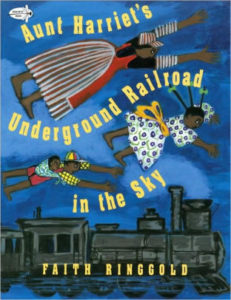 |
In Faith Ringgold’s fantastical Aunt Harriet’s Underground Railroad in the Sky (Dragonfly, 1995), young Cassie is taken on a magic journey retracing the experiences of escaping slaves by none other than Harriet Tubman herself. For ages 4-8.
|
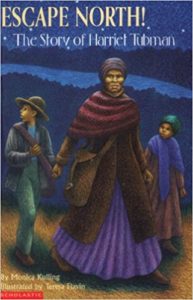 |
By Monica Kulling, Escape North! The Story of Harriet Tubman (Random House, 2000) is a Step Into Reading Book covering Tubman’s life from her childhood as a slave through her years as a conductor on the Underground Railroad to her later work fighting for women’s right to vote. For ages 6-9.
|
 |
By Carole Boston Weatherford and beautifully illustrated with paintings by Kadir Nelson, Moses (Hyperion, 2006) is the story of Harriet Tubman, with emphasis on how her reliance on religious faith aided her in her escape to freedom and her later role in the Underground Railroad. For ages 6-9.
|
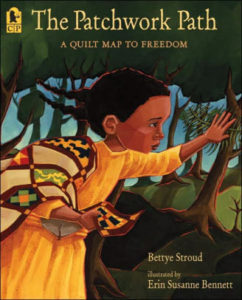 |
In Bettye Stroud’s The Patchwork Path (Candlewick, 2007), Hannah’s father is planning to make a break for freedom, and the patchwork quilt left to Hannah by her mother contains clues that will guide them on their way to Canada. For ages 5-8.
|
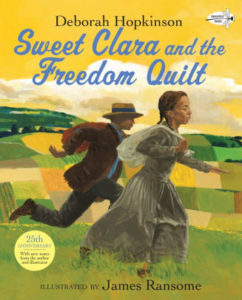 |
In Deborah Hopkinson’s Sweet Clara and the Freedom Quilt (Dragonfly Books, 2015), Clara longs for freedom and dreams of being reunited with her mother. When she learns about the Underground Railroad, she fashions a quilt from fabric scraps that secretly functions as a map, showing other slaves how to find the way North. For ages 5-8. |
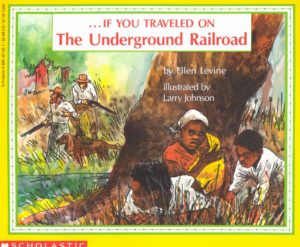 |
By Ellen Levine, If You Traveled on the Underground Railroad (Scholastic, 1993) is written in a conversational question-and-answer format. “What was the Underground Railroad? Why would you run away? Where was the safest place to go? How did owners try to catch the fugitives?” For ages 7-10. |
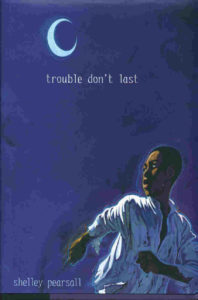 |
In Shelley Pearsall’s Trouble Don’t Last (Yearling, 2003), 11-year-old Samuel has been raised by the elderly Harrison after his mother was sold – and now, when Harrison decides to run away, Samuel goes with him. The journey north via Underground Railroad is harrowing and dangerous – but ends with a reunion and a promise of a new life in Canada. For ages 8-12. |
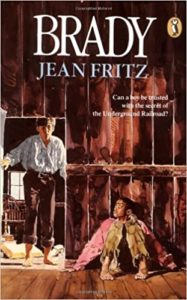 |
When the title character of Jean Fritz’s Brady (Puffin, 2001) discovers an Underground Railroad station near his home in Pennsylvania, he has to decide where his values lie – with his preacher father who is anti-slavery, or with his Virginia mother, who defends it. For ages 8-12.
|
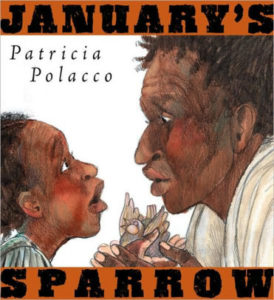 |
In Patricia Polacco’s January’s Sparrow (Philomel, 2009), set in 1840, after the brutal re-capture and killing of their friend January, the Crosswhite family escapes from a Kentucky plantation and flees to Marshall, Michigan. There they settle until a gang of “paddy rollers” appears to take them back to slavery. The townsfolk of Marshall, however, have other ideas. Told from the point of view of Sadie, the youngest Crosswhite child. For ages 9-12. |
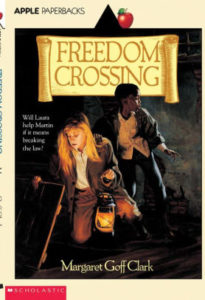 |
In Margaret Goff Clark’s Freedom Crossing (Scholastic, 1991), Laura returns to the family farm in New York after living for four years with her aunt and uncle in Virginia – only to find that her father and brother are now conductors on the Underground Railroad, helping escaping slaves reach Canada. When a runaway slave is brought to the farm while Laura’s father is away, Laura has to decide where her values lie – even though it may mean breaking the law. For ages 9-12. |
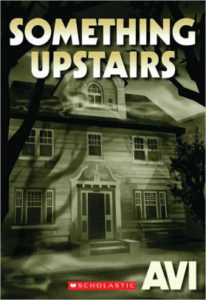 |
In Avi’s Something Upstairs (Scholastic, 2010), 12-year-old Kenny and family have moved to an old house in Providence, Rhode Island, where Kenny discovers that his attic bedroom in haunted by the ghost of a young slave named Caleb. A time-travel thriller and murder mystery with a social message for ages 9-12.
|
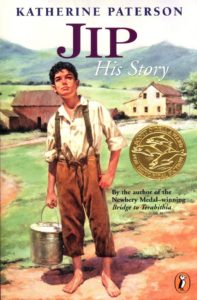 |
In Katherine Paterson’s Jip, His Story (Puffin, 1998), Jip – tossed off a wagon as an infant – has been raised on a Vermont poor farm. Then he discovers that he’s half-black, the son of an escaped slave – and is at risk of being claimed as property by a Southern plantation owner. For ages 9-14.
|
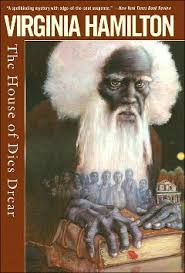 |
In Virginia Hamilton’s The House of Dies Drear (Aladdin, 2006), 13-year-old Thomas’s new home, once a stop on the Underground Railroad, is said to be haunted by the ghosts of fugitive slaves, killed by bounty hunters, and by the ghost of abolitionist Dies Drear. A history mystery for ages 9 and up.
|
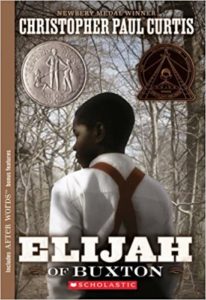 |
By Christopher Paul Curtis, Elijah of Buxton (Scholastic, 2009), a Newbery Honor winner, is the story of eleven-year-old Elijah, the first child to be born free in the town of Buxton, Canada, settled by escaped slaves. When a thief steals the money that his friend, Mr. Leroy, was saving to buy his still-enslaved family, Elijah crosses the border from free Canada into America in an attempt to get it back. Sad, glad, and wonderful. For ages 9-12. |
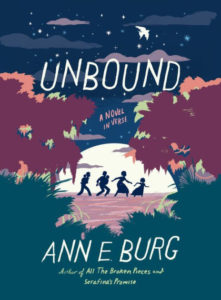 |
In Ann E. Burg’s Unbound (Scholastic, 2018), a novel in verse, young Grace – sent from the slave cabins to work in the Big House – simply can’t keep her thoughts about injustice to herself. Grace and her family, now in danger of retribution, run away, and find sanctuary in the Great Dismal Swamp, with a settlement of other runaways. For ages 9-12.
|
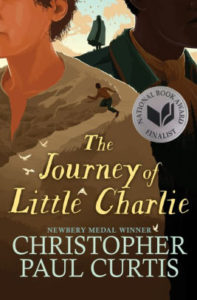 |
By Christopher Paul Curtis, in The Journey of Little Charlie (Scholastic, 2018), Little Charlie’s white sharecropper father has just died and the family is in debt to the noxious Cap’n Buck – so Charlie is forced to accompany Buck north to retrieve some stolen property for his boss, which turns out to be a family of escaped slaves. The young son of the family, Sylvanus, is at school in Canada, so Charlie, who is beginning to doubt the rightness of his mission, is soon embroiled in an international kidnapping. For ages 10-14. |
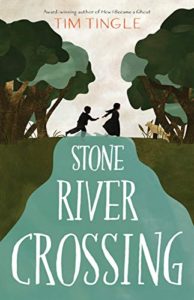 |
In Tom Tingle’s Stone River Crossing (Tu Books, 2019), the Bok Chitto River is the border between Martha Tom’s Choctaw Nation and the Mississippi plantation where Lil Mo and his family are enslaved. When Lil Mo learns that his mother is to be sold, the family manages to cross the river via a secret underwater pathway and find shelter with the Native Americans. The story centers around the little-known historical bond between Native Americans and slaves, both victims of tyranny and discrimination. For ages 10-14. A picture-book version of this story, also by Tingle, Crossing Bok Chitto (Cinco Puntos Press, 2008), is recommended for ages 7-12. |
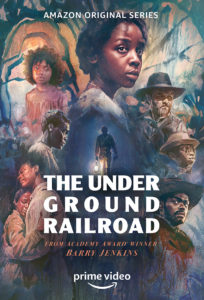 |
Based on Colson Whitehead’s The Underground Railroad (Knopf Doubleday, 2016) – winner of both a Pulitzer Prize and a National Book Award – The Underground Railroad (2021), a 10-episode series, is the story of Cora, an escapee who is relentlessly pursued by Ridgeway, a slavecatcher, while she travels north on the Underground Railroad. |
